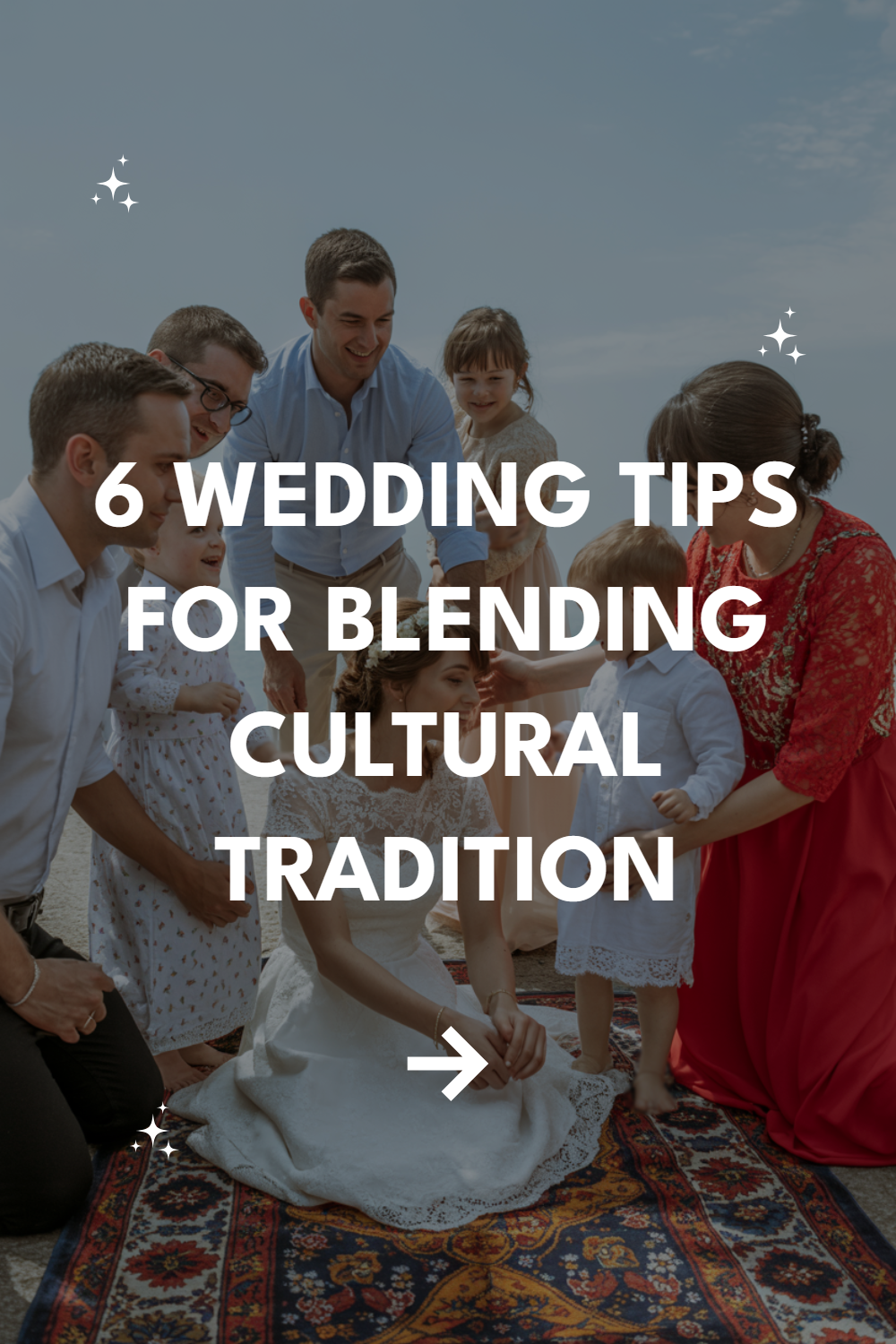Planning a wedding that honors multiple cultural backgrounds can feel like choreographing a beautiful, complex dance.
You’re not just merging two lives—you’re weaving together family histories, religious practices, and traditions that may have never shared the same space before.
The key lies in thoughtful integration rather than forced fusion. Here’s how to create a celebration that feels authentic to both of your stories.
1. Start with the Sacred Elements First
Begin by identifying the non-negotiable religious or spiritual components from each culture. These are the moments that carry the deepest meaning for your families and communities.
Maybe it’s the seven vows around the sacred fire in a Hindu ceremony, or the breaking of glass in a Jewish wedding. Perhaps it’s the tea ceremony honoring elders in Chinese tradition, or the handfasting ritual from Celtic heritage.
Map Out Your Ceremony Structure
Create a timeline that allows each sacred element to breathe. Rushing through meaningful rituals because you’re trying to fit everything in defeats the purpose entirely.
Consider having two separate ceremony moments—one for each tradition—rather than cramming everything into a single service. This gives proper reverence to both cultures without creating a confusing mashup.
Explain the Significance
Your guests will appreciate understanding what they’re witnessing. Prepare simple programs that explain each ritual’s meaning and cultural significance.
Include both families in writing these explanations. Grandparents often have the most beautiful insights into why certain traditions matter, and their words carry weight that generic descriptions never could.
2. Navigate Family Expectations with Diplomatic Honesty
Family dynamics around cultural traditions can get intense quickly. Someone’s going to have opinions about how things “should” be done, and those opinions might conflict dramatically.
The trick is acknowledging these feelings while maintaining boundaries around your vision. Your wedding needs to feel authentic to you as a couple, not like a performance for competing audiences.
Hold Family Meetings Early
Gather both families—separately at first if needed—to discuss expectations and non-negotiables. Let everyone voice their concerns and wishes before you start making decisions.
This isn’t about giving everyone veto power over your choices. It’s about understanding the emotional landscape you’re working with and finding compromises that honor the most important elements.
Create New Traditions Together
Sometimes the most meaningful solution is creating something entirely new that incorporates elements from both cultures. This can actually be more powerful than trying to preserve everything exactly as it’s always been done.
Consider blending music styles during your processional, or creating a unity ritual that combines symbolic elements from both traditions. These hybrid moments often become the most memorable parts of the celebration.
3. Design Your Reception to Tell Both Stories
Your reception offers more flexibility than the ceremony for cultural expression. This is where you can really let both traditions shine through food, music, dancing, and decor.
Think about the flow of the evening as chapters in a book. Each cultural element should feel intentional and connected to the larger narrative of your celebration.
Plan Your Menu Strategically
Food is often the most appreciated way to share culture with guests. Consider having stations or courses that represent different traditions rather than trying to fusion-cook everything.
A taco bar alongside a traditional Italian pasta station tells a clearer story than attempting to create Italian-Mexican fusion dishes that might not satisfy anyone. Let each cuisine speak for itself.
Coordinate Your Entertainment
Music and dancing from different cultures can create amazing energy when planned thoughtfully. Consider having specific times for different cultural dances rather than trying to blend everything continuously.
Your DJ or band needs to understand the cultural significance of certain songs and when they’re traditionally played. The timing of a money dance or hora can make or break the authentic feel of these moments.
4. Handle Dress Code Diplomatically
Clothing choices for multicultural weddings require extra sensitivity. You’re dealing with religious requirements, cultural appropriation concerns, and practical considerations all at once.
The goal is helping guests feel comfortable while ensuring everyone understands what’s appropriate for the different cultural elements of your celebration.
Provide Clear Guidance
Include dress code information in your invitations or on your wedding website. Be specific about what’s expected for different parts of the celebration.
If your ceremony requires head coverings or removes shoes, mention this clearly. If certain colors have cultural significance (like avoiding white in some Asian cultures or red in others), provide gentle guidance.
Consider Outfit Changes
Many couples change outfits between ceremony and reception to honor different cultural traditions. This can be a beautiful way to showcase both heritages without compromising either.
Plan these transitions carefully with your photographer and wedding coordinator. Outfit changes take time, and you don’t want to disappear from your own party for too long.
5. Work with Vendors Who Understand Cultural Nuances
Not every wedding vendor has experience with multicultural celebrations. The ones who do can make your planning process infinitely smoother.
Look for vendors who ask thoughtful questions about your cultural needs rather than assuming they can wing it. Experience with your specific traditions matters more than general cultural awareness.
Choose Your Officiant Carefully
Your officiant sets the tone for how respectfully your cultural elements are woven together. They need to understand the significance of each tradition and be comfortable facilitating unfamiliar rituals.
Consider having co-officiants from different cultural or religious backgrounds. This can provide authenticity and comfort for both families while ensuring nothing gets lost in translation.
Find Culturally Aware Photographers
Your photographer should understand the key moments in each cultural tradition and know how to capture them appropriately. Some religious ceremonies have restrictions on photography that need to be respected.
Look at portfolios that show experience with your specific cultural traditions. A photographer who’s never shot a Indian wedding might miss the most important moments of your ceremony.
6. Prepare for Awkward Moments with Grace
Despite your best planning, some moments will feel awkward or confusing. Guests might not know what to do during unfamiliar rituals, or family members might feel uncomfortable with traditions they don’t understand.
Having a plan for these moments helps you navigate them with grace rather than stress. Remember that most awkwardness comes from people wanting to be respectful but not knowing how.
Designate Cultural Ambassadors
Ask family members or friends from each culture to help guide guests through unfamiliar traditions. These informal ambassadors can answer questions and help people feel more comfortable participating.
Choose people who are naturally warm and patient. Their job is to make everyone feel included, not to police cultural authenticity.
Keep Your Sense of Humor
Things will go differently than planned. Someone will mispronounce something important, or a ritual will take longer than expected, or your flower girl will decide she’s done with the whole thing.
These imperfect moments often become the stories you’ll treasure most. Your wedding is about celebrating love across cultures, not executing a flawless performance.
Embracing the Beautiful Complexity
Blending cultural traditions in your wedding creates something richer and more meaningful than either tradition could offer alone. Yes, it requires more planning and sensitivity than a single-culture celebration.
But the result is a wedding that truly represents who you are as a couple and honors the diverse communities that shaped you. Your guests will leave having learned something new about love, tradition, and the beauty of cultural exchange.
The most successful multicultural weddings don’t try to make everything perfect—they focus on making everything meaningful. Trust that your love story is worth the extra effort it takes to tell it authentically.


